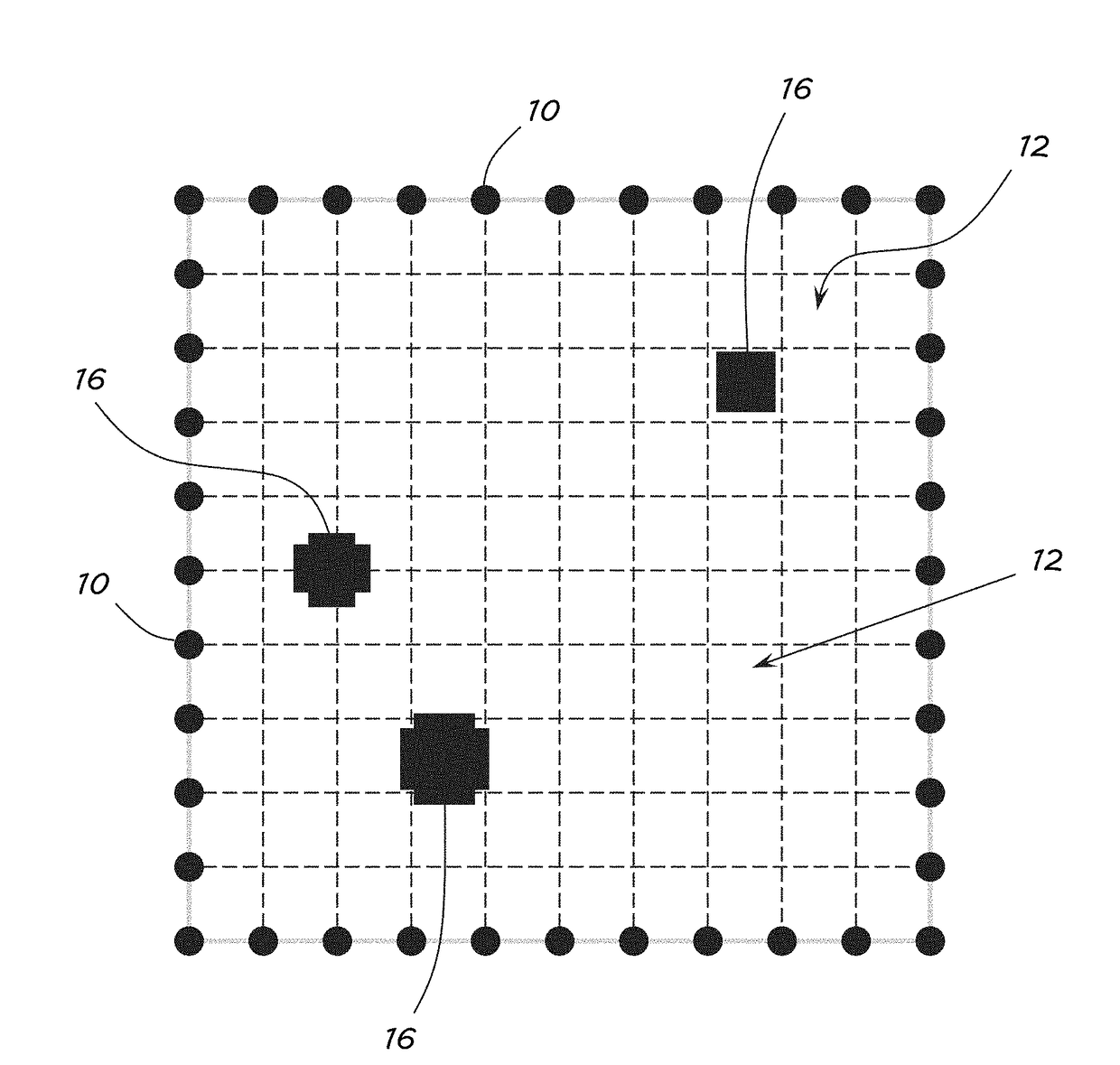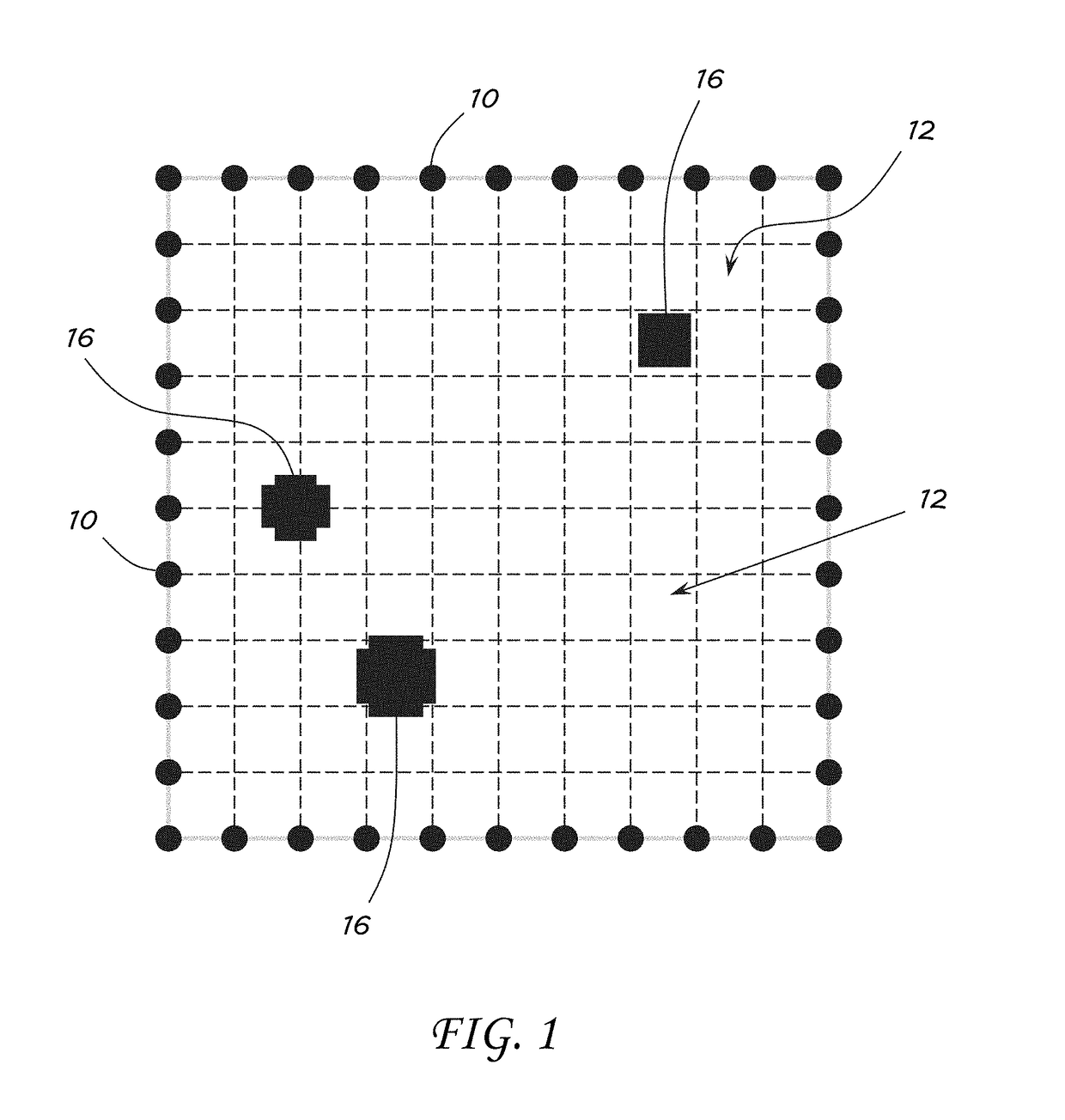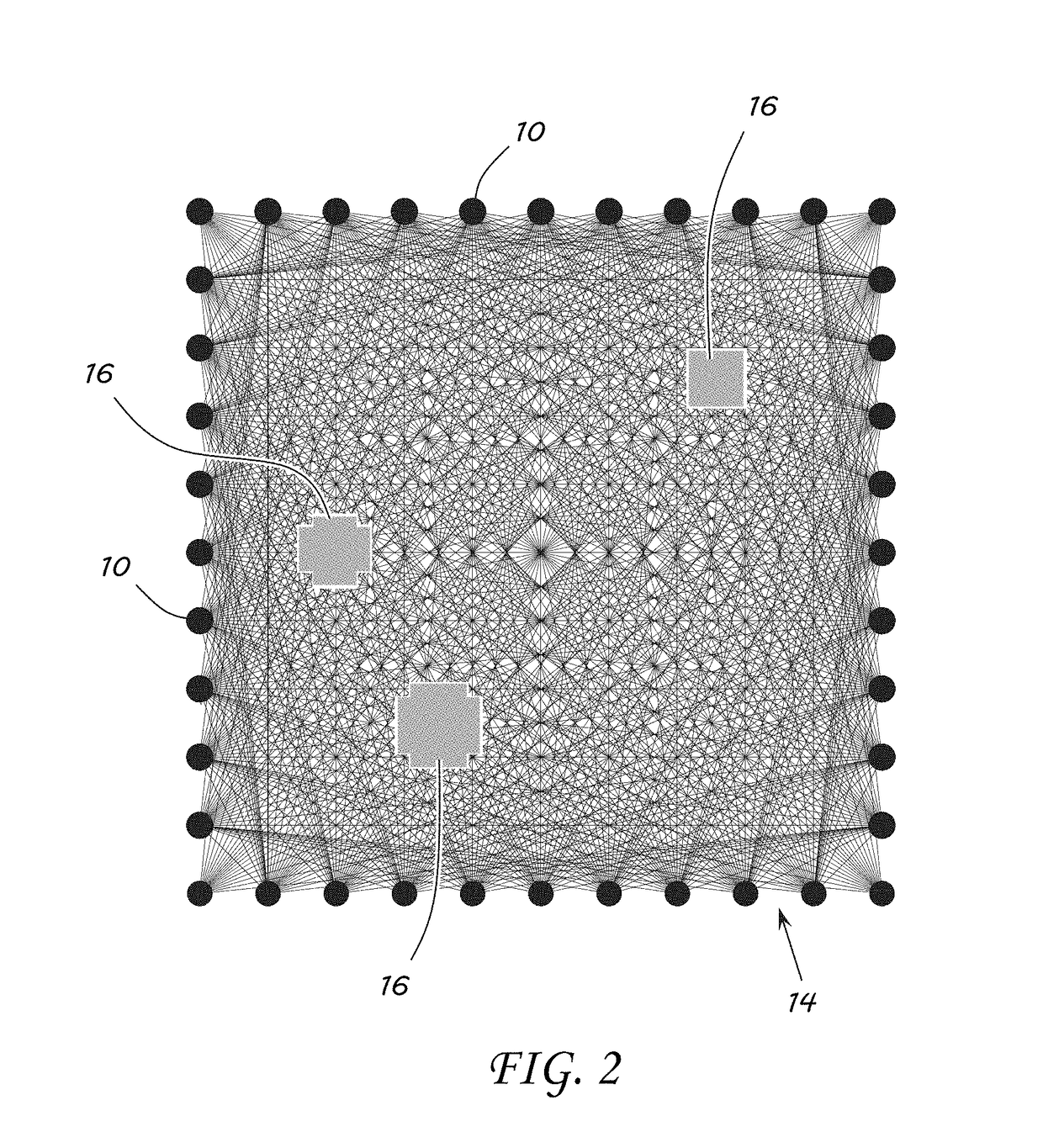System and Method for Radio Tomographic Image Formation
a radio tomographic and image technology, applied in wave based measurement systems, instruments, measurement devices, etc., can solve problems such as scale deploymen
- Summary
- Abstract
- Description
- Claims
- Application Information
AI Technical Summary
Benefits of technology
Problems solved by technology
Method used
Image
Examples
Embodiment Construction
[0032]Before setting out details of embodiments of the invention, a brief review of a standard process for generating radio tomographic imaging (RTI) will be presented. This standard process will also provide a baseline for comparison with embodiments of the invention. In RTI, K transceivers 10 (acting as both transmitter and receiver) are generally deployed around a region divided into N pixels 12 as illustrated in FIG. 1. While the arrangement in FIG. 1 and examples provided throughout are generally two dimensional in nature, the methodology presented could also be extended to three dimensions, where the monitored region would be divided into a series of voxels in those three dimensional embodiments. Typically, a transceiver network is fully connected with M=K(K−1) / 2 unique links 14 as illustrated in FIG. 2. Calibration is performed to determine a baseline RSS of each link. When a person or object 16 enters the region, attenuation 18 will increase within pixels 12 where new obstru...
PUM
 Login to View More
Login to View More Abstract
Description
Claims
Application Information
 Login to View More
Login to View More - R&D
- Intellectual Property
- Life Sciences
- Materials
- Tech Scout
- Unparalleled Data Quality
- Higher Quality Content
- 60% Fewer Hallucinations
Browse by: Latest US Patents, China's latest patents, Technical Efficacy Thesaurus, Application Domain, Technology Topic, Popular Technical Reports.
© 2025 PatSnap. All rights reserved.Legal|Privacy policy|Modern Slavery Act Transparency Statement|Sitemap|About US| Contact US: help@patsnap.com



